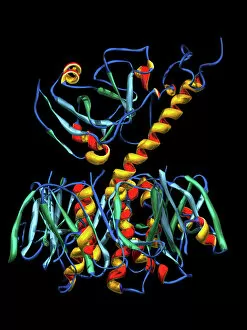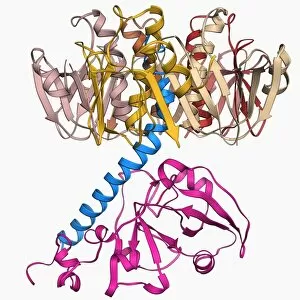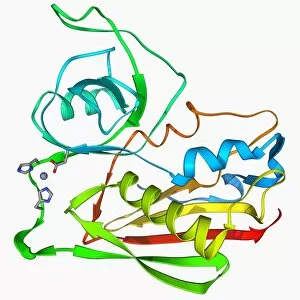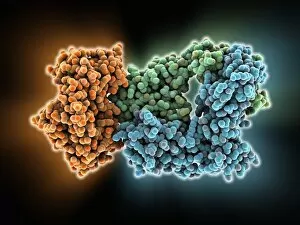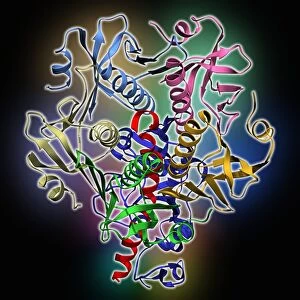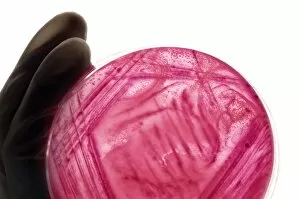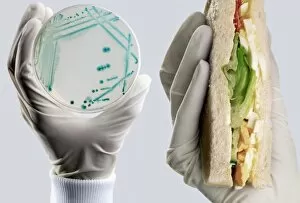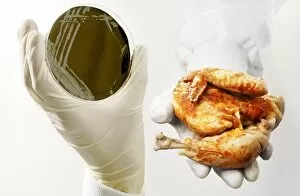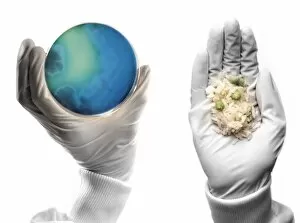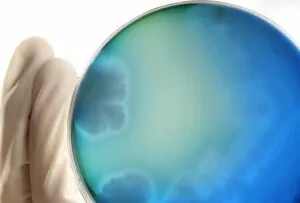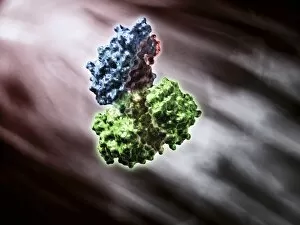Enterotoxin Collection
"Unveiling the Molecular World of Enterotoxin: Exploring Cholera Toxin and Escherichia coli Heat-Labile Enterotoxins" Enterotoxins
For sale as Licensed Images
Choose your image, Select your licence and Download the media
"Unveiling the Molecular World of Enterotoxin: Exploring Cholera Toxin and Escherichia coli Heat-Labile Enterotoxins" Enterotoxins, such as Cholera toxin and Escherichia coli heat-labile enterotoxins, are fascinating molecules that have garnered significant attention in the field of microbiology. These toxins play a crucial role in causing gastrointestinal diseases by targeting specific cells within our bodies. One remarkable example is the Cholera toxin molecule (F006/9546), which exhibits an intricate molecular model. Its structure reveals how this toxin binds to host cells, triggering severe diarrhea and dehydration characteristic of cholera infections. Similarly, Staphylococcal enterotoxin C2 molecule (F006/9506) showcases another captivating aspect of enterotoxins. This particular molecule has been extensively studied due to its association with food poisoning outbreaks caused by contaminated foods. Escherichia coli heat-labile enterotoxins also contribute significantly to gastrointestinal illnesses. The molecular models F006/9412 and F006/9410 provide insights into their mechanisms of action, highlighting their ability to disrupt cellular functions and induce intestinal distress. Moreover, T-cell receptors bound to enterotoxin exemplify the complex interaction between these toxins and our immune system. Understanding this interplay can aid in developing effective treatments or vaccines against these harmful pathogens. The recurring presence of Cholera toxin molecules underscores its significance as a major player among enterotoxic agents. Its repeated appearance emphasizes ongoing research efforts aimed at comprehending its structure-function relationship for therapeutic advancements. Lastly, Escherichia coli heat-labile enterotoxin C013/7180 stands out due to its unique characteristics that distinguish it from other variants within this family of toxins. Exploring the world of enterotoxins through molecular models like those mentioned above sheds light on their intricate nature and provides a foundation for further research.

